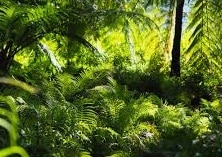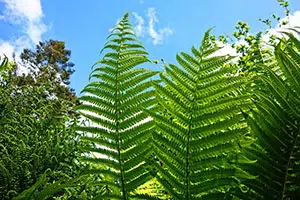 A plant is a living being that does not have locomotor capacity. It is an organism that develops photosynthesis (since it uses sunlight to obtain the energy that allows it to synthesize organic matter from inorganic substances) and that, for this reason, is autotrophic (it produces its organic matter from inorganic elements).
A plant is a living being that does not have locomotor capacity. It is an organism that develops photosynthesis (since it uses sunlight to obtain the energy that allows it to synthesize organic matter from inorganic substances) and that, for this reason, is autotrophic (it produces its organic matter from inorganic elements).
Vascular , meanwhile, is a notion that in botany is used to refer to that linked to the vessels of plants: that is, to the ducts through which the latex or sap circulates.
Vascular plants , in this way, are those that have leaves, stems and roots and that have a vascular system made up of conductive vessels . Two other names by which they are known are cormophytic or higher plants. There are two types of vessels: xylem and phloem .
Both components of this organization that is responsible for transporting the sap are made up of a different tissue from the rest of the plant, one specialized in this particular function, and they carry out a route that passes through the root, stem and leaves.
In the case of the xylem , it is the conducting vessel that is responsible for carrying nutrients from the roots to the rest of the plant . The sap that this woody vessel carries is the "raw" sap, whose composition is the set of mineral salts and water that reach the plant through the action of the root. The phloem, for its part, is the Liberian vessel and transfers the nutrients synthesized from the leaves to other parts of the organism.
The roots of vascular plants are responsible for absorbing nutrients from the surface, in addition to storing them and supporting the structure of the plant. The sap circulates through the vessels, which is the liquid from which the cells obtain nutrients.
It should be noted that in vascular plants it is possible to differentiate between two types. Spermatophytes produce seeds , while pteridophytes reproduce through spores. Spermatophytes, in turn, are divided into angiosperms ( monocotyledons and dicotyledons ) and gymnosperms .
 The study of tissues can be essential to differentiate plant types beyond their appearance. For example, there are cases of species that appear to have roots, as occurs with certain algae, but in reality they are simply "extremities" that do not perform special functions, different from those of the rest of the body, as is the case with the roots of a plant. vascular plant. This helps us highlight the importance of function over morphology in this field.
The study of tissues can be essential to differentiate plant types beyond their appearance. For example, there are cases of species that appear to have roots, as occurs with certain algae, but in reality they are simply "extremities" that do not perform special functions, different from those of the rest of the body, as is the case with the roots of a plant. vascular plant. This helps us highlight the importance of function over morphology in this field.
Among the tissues that we can find in vascular plants, the most important are the following: meristems , those of growth ; epidermis , they cover the plant and make it waterproof; parenchyma , its various types participate in photosynthesis, prevent plant suffocation, store reserve substances and prevent dehydration, among other vital functions.
Although respiration and photosynthesis are not exclusive processes of vascular plants, together they are one of their characteristics because they perform both. Through photosynthesis they can absorb the carbon dioxide present in the atmosphere and fix it into complex carbon molecules that they need for their healthy development; They carry out the latter using the so-called chloroplasts , organelles that have the cells of their leaves inside and that have a high percentage of chlorophyll.
In a complementary way to photosynthesis, therefore, vascular plants respire. They carry out this process continuously in their leaves and stems with the aim of obtaining energy to produce complex molecules such as polysaccharides and proteins, among others, which are essential for their life.
